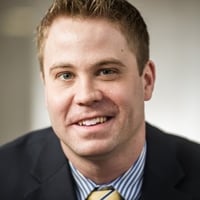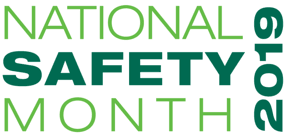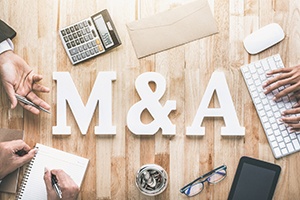Today we’re sharing insight from guest blogger, Andrew Wiand, Executive Director of enFocus, Inc. We hope you enjoy Andrew’s wisdom and perspective.
 I’m sure every leader has felt something similar: I want my staff to have autonomy and inspiration to think outside of the box, but we also need to focus on the task at hand. Freedom and responsibility are core aspects of high performance, but there is a certainly a balance required to ensure that employees are staying focused on the critical tasks to complete necessary efforts while also producing the ideas the company can capitalize on in the long term.
I’m sure every leader has felt something similar: I want my staff to have autonomy and inspiration to think outside of the box, but we also need to focus on the task at hand. Freedom and responsibility are core aspects of high performance, but there is a certainly a balance required to ensure that employees are staying focused on the critical tasks to complete necessary efforts while also producing the ideas the company can capitalize on in the long term.
There are many answers to this riddle across organizations, varied by type of business, type of job, and leadership philosophy. At the same time, there are many organizational models for creating innovative ideas; from “thinktank” spaces to design thinking exercises to newly formed innovation groups that are specifically designed to dream up the next wave of products and services for the company.
The problem is often exacerbated by the strengths, attitudes, and preferences of individuals. One individual may be largely an idea person, while another may often lose the forest through the trees. Another is an extrovert and the next will be very uncomfortable speaking up at a meeting. This push and pull exists across professionals, and each type and subtype require different methods of coaching. Further, the complexity is often multiplied working across teams and larger groups.
I believe that every employee can be and should be both creative and efficient, regardless of their personality test. One way this can work in practice is simply by using one or the other as a reward or incentive to complete the required work. For example, individuals tend to enjoy some activities more than another and people need to recharge their work batteries with tasks they enjoy. So why not intentionally build each individual’s balance of creativity and process to satisfy the employee’s need for fulfillment and increase their productivity at the same time.
Mindful approaches to balancing creativity and efficiency across job responsibilities can help build employee buy-in, discover better ways of conducting business, and create an incentive for employee attraction that is unique to your business. While it may seem that the company is actively diluting focus or shifting time away from necessary functions, there is actually a built-in incentive to finish required work and spend some time on motivating tasks. The actual effect is to increase output and build stronger culture.
Company leaders need to enable this behavior through intentional company policies, values, and practices.
- Policy: Build some creative leeway into your policies for work rules and construct careful language to enable employees to incorporate both continuous improvement and outside of the box thinking into major projects.
- Core Values: Make sure that it is clear you value ideas and performance. Your values are the basis for the company’s collective attitudes and beliefs.
- Situational Management: Practice what your values indicate. Try saying things like “Get your project done and we can explore that concept” or “Perhaps we could look at alternative pathways to achieve the same result that would be more effective next time.”
- Time For Enrichment Activities: Be conscious of what motivates individuals. Allow work time periodically to dive deeper into those activities they most enjoy.
- Action & Results: Build a method to act on new aspects or ideas that arise from new activities. Create a method to review creative ideas, turn ideas to action, and measure the impact of new suggestions.
What's The Risk?
The risk is not that you lose focus or lose time; the risk is company stagnation and a lack of new ideas upon which to build your business’ future. The best ideas come from those leading the day-to-day and without them, you won’t have a business at all.
This content was written and shared by guest blogger Andrew Wiand.
 Andrew received his degree in Biological Sciences from Notre Dame in 2011. During his senior year, Andrew led an innovative independent research project concentrating on antioxidant effects on growth factor pathways in breast cancer cells. Andrew received his Master’s of Science from University of Notre Dame's Engineering, Science, Technology and Entrepreneurship Excellence Master's (ESTEEM) program in 2012. Andrew co-founded enFocus in May of 2012 as a student and was hired as one of the first enFocus Fellows in August 2012. Andrew went on to hold positions such as Senior Fellow Project Manager in 2013 and Director of Operations is 2014. In early 2015, Andrew was hired as Executive Director of enFocus, charged with guiding the organization's growth and business strategy. As Executive Director, Andrew has led the continued growth of the program into two Indiana communities and has managed the completion of over 120 sponsored business and technology projects for over 75 regional companies. These projects have created over $75 million in business value for sponsoring entities and have attracted over 650 recent graduates to enFocus. Andrew enjoys spending time with his son, Ethan, in his spare time and also plays the cello.
Andrew received his degree in Biological Sciences from Notre Dame in 2011. During his senior year, Andrew led an innovative independent research project concentrating on antioxidant effects on growth factor pathways in breast cancer cells. Andrew received his Master’s of Science from University of Notre Dame's Engineering, Science, Technology and Entrepreneurship Excellence Master's (ESTEEM) program in 2012. Andrew co-founded enFocus in May of 2012 as a student and was hired as one of the first enFocus Fellows in August 2012. Andrew went on to hold positions such as Senior Fellow Project Manager in 2013 and Director of Operations is 2014. In early 2015, Andrew was hired as Executive Director of enFocus, charged with guiding the organization's growth and business strategy. As Executive Director, Andrew has led the continued growth of the program into two Indiana communities and has managed the completion of over 120 sponsored business and technology projects for over 75 regional companies. These projects have created over $75 million in business value for sponsoring entities and have attracted over 650 recent graduates to enFocus. Andrew enjoys spending time with his son, Ethan, in his spare time and also plays the cello.
Connect with Andrew via LinkedIn. Connect with enFocus via their website, LinkedIn, Twitter, and Facebook.



